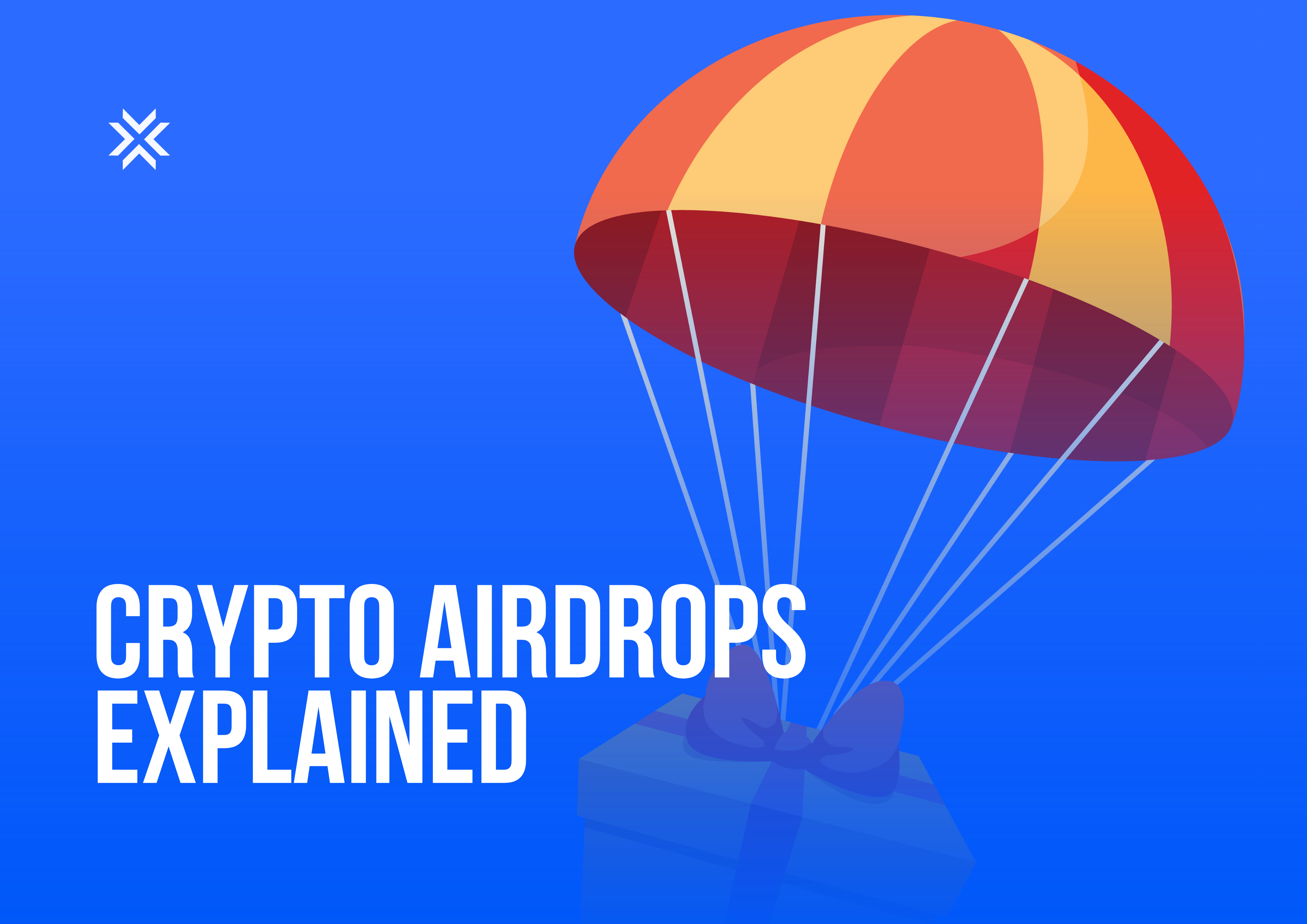In the dynamic world of cryptocurrency, where innovation meets opportunity, one strategy has consistently stood out for its simplicity and impact: the airdrop. At first glance, airdrops may seem like nothing more than free giveaways, but in the crypto ecosystem, they serve a far deeper purpose. From marketing strategies to community building and decentralization, airdrops are a key instrument in the toolbox of any serious blockchain project.
This article unpacks the concept of crypto airdrops, explains how they work, explores the types, benefits, risks, and answers the most common questions surrounding them.
What is a Crypto Airdrop?
A crypto airdrop is a promotional activity where blockchain projects distribute free tokens to wallet addresses. The core idea is simple: give away a portion of a project’s token supply to raise awareness, reward users, or kickstart an ecosystem.
Typically, users receive these tokens either automatically (based on blockchain data such as token holdings or transaction history) or by completing specific tasks, such as registering for a newsletter or engaging with the project on social media.
Airdrops can range from being widely available to the public to highly exclusive, targeting specific communities or early adopters.
Why Do Airdrops Happen?
Airdrops are not random acts of generosity. They are carefully designed strategies that serve multiple purposes:
- User Acquisition: Like free samples in the real world, airdrops introduce new users to a platform or token without requiring an upfront investment.
- Decentralization: Distributing tokens to a wide audience helps decentralize ownership and promotes healthy governance if the token is tied to voting power.
- Incentivization: Projects use airdrops to incentivize specific behaviors, such as holding a certain token, interacting with a dApp, or joining a liquidity pool.
- Rewarding Loyalty: Projects often airdrop tokens to users who supported them early on or contributed in meaningful ways.
- Marketing & Virality: Airdrops can create buzz on social media and drive visibility in a competitive space.
How Do Airdrops Work?
Airdrops follow a general process that can vary slightly depending on the project’s goals:
Step 1: Snapshot
A snapshot is a recorded state of the blockchain at a specific time. It captures wallet addresses and balances to determine eligibility for the airdrop. For example, a snapshot might record all wallets holding 1 ETH or more on a specific date.
Step 2: Eligibility Criteria
To qualify, users often need to meet certain conditions:
- Holding a specific token (e.g., ETH, USDT)
- Using a particular dApp (e.g., trading on Uniswap)
- Completing social tasks (e.g., follow, like, tweet)
- Being part of a community (Discord, Telegram)
Step 3: Distribution or Claiming
Tokens are either:
- Automatically sent to eligible wallets (as with Uniswap’s airdrop)
- Claimed manually via a project’s official website by connecting a wallet
Some projects even gamify the process by offering “mystery boxes” with variable rewards.
Types of Airdrops
1. Standard Airdrop
Distributed to users who register or complete simple tasks. Common for new token launches.
2. Holder Airdrop
Only for users who hold a specific token at the time of the snapshot.
3. Fork Airdrop
Occurs when a blockchain splits (forks). For instance, Bitcoin holders received Bitcoin Cash (BCH) after the BTC fork.
4. Bounty Airdrop
Given to users who perform specific tasks like writing blog posts, sharing tweets, or creating YouTube reviews.
5. Exclusive/Retroactive Airdrop
Given to early adopters or users who interacted with a protocol before a specific date. These often reward genuine users, not speculators.
Famous Quotes on Airdrops
“Airdrops are not just free tokens—they’re proof that participation matters.”
— Brian Armstrong, CEO of Coinbase
“The best loyalty program in crypto is an airdrop with actual utility.”
— Hayden Adams, Creator of Uniswap
“The most impactful crypto products don’t need ads—they airdrop.”
— Vitalik Buterin, Co-founder of Ethereum
These quotes highlight the deeper role airdrops play in user engagement, retention, and ecosystem development.
Pros and Cons of Airdrops
✅ Pros
- Free Entry: No capital required to get started
- Reward Loyalty: A way to appreciate early community members
- Boosts Adoption: Helps new projects quickly onboard users
- Promotes Token Use: Encourages trading, staking, governance
- Decentralized Distribution: Helps prevent concentration of token ownership
❌ Cons
- Pump-and-Dump Behavior: Users often sell tokens immediately, affecting price
- Scam Risk: Fake airdrops can be phishing attacks
- Low-Value Tokens: Many airdropped tokens have no lasting value
- Sybil Attacks: Users create multiple wallets to maximize rewards
How to Participate in Airdrops
To benefit from airdrops:
- Stay Active: Use new protocols, bridges, DEXs, and L2s.
- Join Communities: Follow project socials and Discord channels.
- Be Cautious: Use burner wallets and avoid sharing private info.
Airdrop Scams & How to Stay Safe
With the rise in popularity, scams have become frequent:
- Phishing Sites: Fake claim pages that steal wallet keys.
- Fake Tokens: Malicious contracts disguised as legitimate tokens.
- Imposter Accounts: Lookalike Twitter or Telegram channels.
Safety Tips:
- Never share your seed phrase or private keys
- Only use official links and channels
- Use a separate wallet for experimental claims
- Check token contracts on Etherscan or BSCScan before interacting
The Future of Airdrops
The next evolution in airdrops will likely be:
- Reputation-Based Airdrops: Rewarding behavior and contribution (e.g., using a platform regularly, governance participation).
- On-Chain Identity Integration: With tools like Lens Protocol and Galxe, reputation and history may determine eligibility.
- Dynamic Airdrops: Using smart contracts to release tokens based on milestones, DAO votes, or performance.
The future is smarter, more secure, and more aligned with real user value.
Conclusion
Crypto airdrops are more than free money. They are a cornerstone of Web3 culture, rewarding engagement, fueling adoption, and building decentralized communities from the ground up.
Whether you’re a curious newcomer or an experienced degen, airdrops remind us of a foundational truth in crypto: those who show up early often win big.
FAQs
Q1. What is a crypto airdrop?
A crypto airdrop is the distribution of free tokens to wallet addresses, usually by new or existing blockchain projects, as a marketing or community-building strategy.
Q2. Are airdrops really free?
Yes, most are free, but some may require you to perform tasks or pay small gas fees to claim them. Be cautious of any that ask for private keys.
Q3. How do I know if I’m eligible?
Eligibility depends on the airdrop type. You may need to hold specific tokens, use a certain dApp, or have been part of a protocol’s community before a specific snapshot date.
Q4. Are all airdrops valuable?
No. Some are worth thousands, others are worthless. It depends on the project’s success, tokenomics, and market adoption.
Q5. Where can I find legitimate airdrops?
Check trusted sources like CoinMarketCap, Galxe, AirdropAlert, or follow official project announcements on Twitter and Discord.









